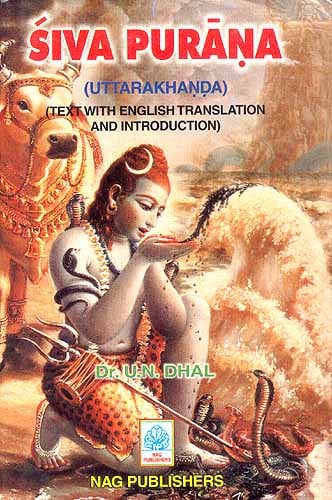

Describes cosmology, the world and nature of life from the perspective of Vishnu. The north Indian manuscripts of Padma Purana are very different than south Indian versions, and the various recensions in both groups in different languages (Devanagari and Bengali, for example) show major inconsistencies. Includes discussion of various philosophies, soteriology, planets, astronomy, myths and characteristics of major deities including Vishnu, Shiva, Devi, Krishna, Rama, Lakshmi and others.

Lists major rivers of India and places of pilgrimage, and a short tour guide for each.

Dedicates one chapter each, from Chapters 92 to 109, to summarize the other 17 Maha Puranas and itself. Discusses the four Vedas and the six Vedangas. It also contains a controversial genealogical details of various dynasties. Includes legends about Brahma and Saraswati. Likely composed in west India, by people aware of geographical details of the Narmada river. Narrates the story of Matsya, the first of ten major Avatars of Vishnu. The Purana includes Devi Mahatmyam of Shaktism.Īn encyclopedia of diverse topics. Contains chapters on dharma and on Hindu epic Mahabharata. Named after sage Markandeya, a student of Brahma. Probably composed in the valleys of Narmada and Tapti rivers, in Maharashtra and Gujarat. It also contains many stories of Lingam, one of which entails how Agni Lingam solved a dispute between Vishnu and Brahma.ĭescribes Vindhya Range and western India. Is the second of ten major avatars of Lord Vishnu.ĭiscusses Lingam, symbol of Shiva, and origin of the universe.
Shiva purana in english how to#
The final chapters discuss how to practice Yoga (Samkhya and Advaita types), personal development and the benefits of self-knowledge. Includes chapters on rivers, geography of Bharat (India) and other nations on earth, types of minerals and stones, testing methods for stones for their quality, various diseases and their symptoms, various medicines, aphrodisiacs, prophylactics, Hindu calendar and its basis, astronomy, moon, planets, astrology, architecture, building home, essential features of a temple, rites of passage, virtues such as compassion, charity and gift making, economy, thrift, duties of a king, politics, state officials and their roles and how to appointment them, genre of literature, rules of grammar, and other topics. Discusses ethics, what are crimes, good verses evil, various schools of Hindu philosophies, the theory of Yoga, the theory of “heaven and hell” with “karma and rebirth”, includes Upanishadic discussion of self-knowledge as a means of moksha. Cosmology, Describes cosmology, relationship between gods. Many chapters are a dialogue between Vishnu and the bird-vehicle Garuda. Describes how Vishnu, Shiva and Brahma collaborate. Primarily about Vishnu, but praises all gods. Mentions geography and rivers such as Ganga to Kaveri.Īn encyclopedia of diverse topics. Primarily mythology, love and seduction stories of gods and goddesses. ĭiscusses Shiva, Parvati, Ganesha, Devis, Vishnu, Krishna and Radha. Old manuscripts of Brahmanda Purana have been found in the Hindu literature collections of Bali, Indonesia. Includes Lalita Sahasranamam, law codes, system of governance, administration, diplomacy, trade, ethics. One of the earliest composed Puranas, it contains a controversial genealogical details of various dynasties. Describes holy places in Odisha, and weaves themes of Vishnu and Shiva, but hardly any mention of deity Brahma despite the title. Includes mythology, theory of war, art work in temples, and other cultural topics. The text has 245 chapters, shares many passages with Vishnu, Vayu, Markendeya Puranas, and with the Mahabharata. Sometimes also called Adi Purana, because many Mahapuranas lists put it first of 18.

Influential and elaborated during Bhakti movement. Numerous inconsistent versions of this text and historical manuscripts exist, in many Indian languages. It contains a controversial genealogical details of various dynasties. The most studied and popular of the Puranas, telling of Vishnu’s Avatars, and of Vaishnavism. Includes geography of Mithila (Bihar and neighboring states), cultural history, politics, education system, iconography, taxation theories, organization of army, theories on proper causes for war, diplomacy, local laws, building public projects, water distribution methods, trees and plants, medicine, Vastu Shastra (architecture), gemology, grammar, metrics, poetry, food, rituals and numerous other topics.


 0 kommentar(er)
0 kommentar(er)
